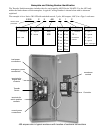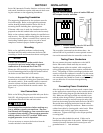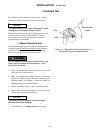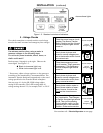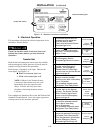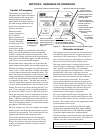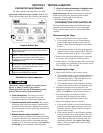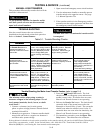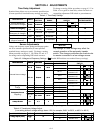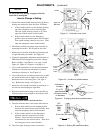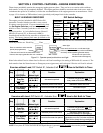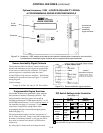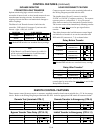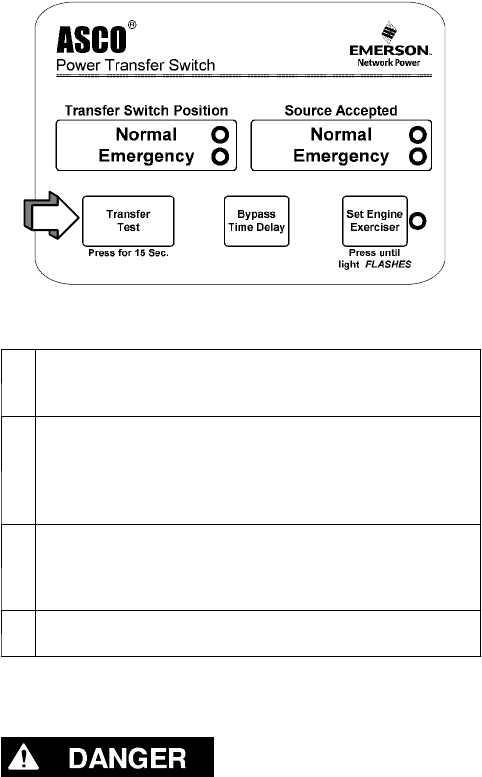
SECTION 3 TESTING & SERVICE
3 --- 1
PREVENTIVE MAINTENANCE
For high reliability and long life for the ATS:
Ope r at e the swi tc h at le as t once a month.Performthis
4–step Electrical Operation Te st (test with load transfer).
Transfer Switch Test
1.
Press and hold the door-mounted Transfer Test button
until the engine starts and runs. This should happen
within 15 seconds.
2.
The transfer switch will operate to the Emergency
position. I f the Tra nsfer To Emergenc y Del ay is used,
thetransferwilloccurafteratimedelay(upto5
minutes). For immediate transfer press Bypass
Time Delay button.
3.
The Transf er Swi tch will operate back to the Norm al
position after the Retransfer To Normal Delay (u p to
30 minutes). For immediate retransfer press
Bypass Time Delay button.
4.
Unloaded Running (Engine Cooldown) Delay allows
engine to run unloaded for 5 minutes.
Checklist for Yearly Inspection
Hazardous voltage capable of causing shock,
burns, or death is used in this switch.
Deenergize both Normal & E mergency power
sources before performing inspections!
S Clea n the enclosure. De–energize all sources,
then brus h and vacuum away any excessive dust
accumulation. Remove moisture with a clean cloth.
S Check the transfer swi tch contacts. De-energ ize
all sources , then remov e the transfer switch barriers
and check contact condition. R eplace the contacts if
they become pitted or worn excessive l y. Reinstal l the
barr iers car eful l y.
S Maintain transfer switch lubrication.Under
normal operating conditions no further lubricating
is required. Renew factory lubrication if the switch
is subjected to severe dust or abnormal operating
conditions or if TS coil is replaced. Order lubricant
625550–001 (Castrol EndurexR 4000 lubricant).
S Check all cable connections & retighten them.
Torquetovaluesshownontransferswitchlabel.
Replacement parts. When ordering parts provide the
Serial and Catalog Nos. from the transfer switch
nameplate. Contact ASI. In the US call
1–800–800–ASCO (2726)).
DISCONNECTING THE CONTROLLER
The harness disconnect plugs are furnished for repair
purposes only and should not have to be unplugged.
If the controller must be isolated, follow these steps
carefully.
Disconnecting the Plugs
1. Observe the position of the transfer switch.
a. If the transfer switch is in the Normal position,
place standby engine starting control in the off
position. Then open the emergency source circuit
breaker.
b. If the transfer switc h is in the Emergency position,
open the normal source circuit breaker. Pl ac e the
engine starting control in the test or run position.
2. Separate the quick disconnect plugs by squeezing
the latches. Do not pull on the harness wires.
3. Label, remove, and tape the signal wires connected
to the engine start terminals on the transfer switch:
TB1 and TB3, or TB1 and TB2.
Reconnecting the Plugs
1. Observe the position of the transfer switch.
a. If the transfer switch is in the Normal position, be
sure that the standby engine starting control is
still in the off position. The emergency source
circuit breaker still should be open.
b. If the transfer switc h is in the Emergency position,
normal source circuit breaker still should be open.
2. Reconnect the signal wires connected to the
appropriate engine start terminals on the transfer
switch. See Section 1, Engine Starting Contacts.
3. The harness plugs and sockets are keyed.
Carefully align the plugs with the sockets
and press straight in until both latches click.
4. Restore the opposite source as follows:
a. If the transfer switch is in the Normal position,
place the standby engine starting control in the
automatic position. Then close the emergency
source circuit breaker.
b. If the transfer switc h is in the Emergency position,
close the normal source circuit breaker. The load
will be automatically retransferred to the normal
source after the Re tra nsfer to Norm a l Delay.For
immediate retransfer, press Bypass Time Delay
button. Place the engine starting control in the
auto m a tic position.



